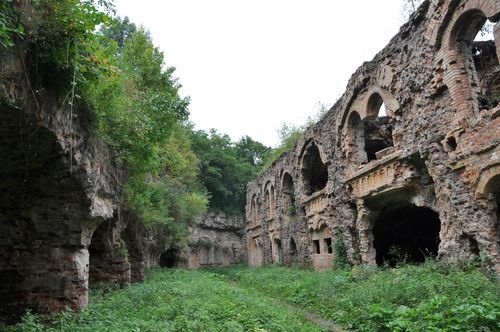New use of the Tarakaniv Fort
Ukraine’s first ever World War I museum is being created in Rivne region
It will be housed in the Tarakaniv Fort, an authentic structure that witnessed the period’s momentous events. The building is unique, with only France having a few similar defensive structures. Meanwhile, Tarakaniv’s architectural marvel is a remnant of the Russian Empire’s drive to strengthen its border defenses. Nowadays, the authorities plan to use the over-century-old fort’s rooms as exhibition venues, where photographs, weapons, maps, and other exhibits dating to World War I will be on display. The museum will also serve as a scene for historical event reenactors. The idea to create the museum originated with the regional administration that intends to open it in 2014.
Meanwhile, travelers who enjoy such exotic places are already offered information about the fort’s history and local legends.
“This defensive structure, commissioned in 1890, took 15 years and 66 million Imperial rubles to build,” the fort’s unofficial curator, researcher Oleksandr Makhnovets said. This architectural marvel was the first in the region to have cement used in construction. Moreover, the fort was equipped with products of the time’s most advanced technologies, including electricity, telephone, and telegraph. It was one of the empire’s three principal fortification projects. However, on completion it was found to be mostly irrelevant in the changed circumstances. Therefore, the fortification never fulfilled its primary purpose, although it did house Russian, Austrian, and German troops for a time. The fort saw limited fighting during World War I, too, Makhnovets explained.
The Tarakaniv Fort was constructed in such a way that uninformed travelers can now walk along its walls and never even notice them. From a bird’s eye view, this fortification resembles to some extent a volcanic crater buried in the ground. However, it is a trapezoid rather than a circle. Another sign of the fort is its flora, out of place there, but introduced at the time precisely to mask the structure’s walls.
“The fort covers an area of about four hectares. It has several levels, two aboveground, and the rest underground. Nobody knows how many levels are in the latter category. Depth of the fort’s wells, equipped for weapons storage, looks like a reasonably good proxy for the underground structure’s depth. Some of the wells are over 30 meters deep,” Makhnovets explained. “Uninformed travelers may get lost in the maze-like fort, so I would advise to go in with a guide. There is also a round room with a column in the middle. On getting there without a flashlight, one is very likely to lose one’s bearings, get lost and spend hours walking around the column. By the way, one is feeling like climbing up a gentle slope during this experience, despite actually staying in one place.”
The fort’s many mysteries only add to its exotic image. In fact, it was built as a complete military town with streets, barracks, a kitchen, a bakery, a hospital, and even a jail. It had its own church, too, and the latter’s premises are still extant.
“People say there is an underground generator still in service in the fort. Purportedly, one can hear it work by putting one’s ear to the floor. In fact, what one hears is sound of trains from the nearby railroad,” Makhnovets debunked a local legend. “Another story is that a column of tanks once entered into the fort, never to emerge again. It is likely the armor just left the fort via another exit.”
These stories and then some more will be offered to future visitors of the World War I museum, as they will walk along many diverse tourist trails on the site, some more demanding than others, these trails to be developed by the museum staff. A museum will be the most appropriate use for the fort, Rivne Oblast State Administration’s deputy chairperson Oleksii Hubanov maintains. However, the authorities plan to build an infrastructure facility there, too, as travelers would need an eatery nearby, which, of course, will be period-themed.






